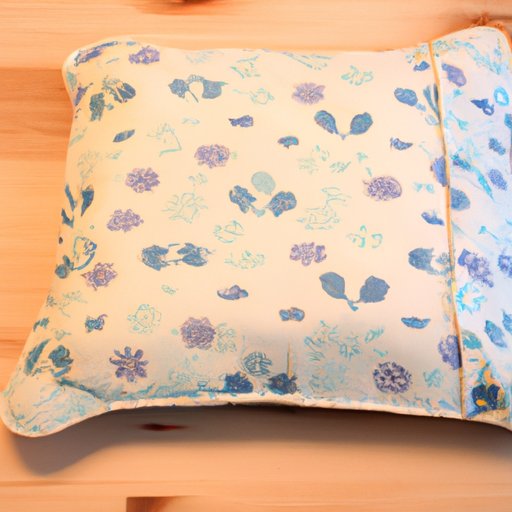Introduction
Heating pads are a great way to soothe sore muscles and provide relief from aches and pains. Making your own heating pad is a great way to customize it to your needs and save money in the process. In this article, we’ll explore what materials you need to make a heating pad, the steps to make one, and some customization and safety tips.
Step-by-Step Instructions
Making your own heating pad is relatively easy and straightforward. Here are the steps you need to take:
Gather Materials
The materials you need to make a heating pad are:
- Fabric – mainly cotton, but you can use other fabrics as well
- Filler material – rice, flaxseed, buckwheat, or corn kernels
- Thread
- Measuring tape
- Scissors
- Needle and thread
Cut Fabric and Sew Together
Measure out the size of your heating pad. You can make it as big or small as you like. Cut two pieces of fabric to the desired size. Place the two pieces of fabric together and sew them together along three sides. Leave one side open so you can fill the pad with filler material.
Fill With Filler Material
Fill the pad with the filler material of your choice. You can use rice, flaxseed, buckwheat, or corn kernels. Fill the pad to about 3/4 full so that it is not too hard or too soft.
Sew Closed
Once you have filled the pad, sew up the remaining side to close the pad. Make sure the stitches are tight so that the filler material doesn’t leak out.
Customizing Your Heating Pad
Now that you have made your basic heating pad, you can customize it to your needs. Here are some ideas:
Different Fabrics
You can use a variety of fabrics to make your heating pad. Cotton is the most popular choice because it is soft and breathable, but you can also use fleece, flannel, or even old t-shirts. Experiment with different fabrics and find the one that works best for you.
Different Fillings
You can also experiment with different types of filler material. Rice is a popular choice because it is cheap and readily available, but you can also use flaxseed, buckwheat, or corn kernels. Each type of filling has its own benefits, so play around with different fillings until you find the one that works best for you.

Using Your Heating Pad Safely
It is important to use your heating pad safely. Here are some tips:
Temperature Settings
Make sure to set your heating pad to the correct temperature. If it is too hot, it can cause burns. Start at a low setting and gradually increase the temperature until you find the one that is comfortable for you.
Time Limits
Don’t leave the heating pad on for too long. Set a timer so that you don’t forget to turn it off. Generally, 15-20 minutes is a good amount of time to use a heating pad.
Creating a Reusable, Microwavable Heating Pad
If you want to make a reusable and microwavable heating pad, here are the steps you need to take:
Gather Materials
The materials you need to make a microwavable heating pad are:
- Two pieces of cotton fabric
- Rice, flaxseed, buckwheat, or corn kernels
- Thread
- Measuring tape
- Scissors
- Needle and thread
- Microwave-safe bowl
Sew Together
Follow the same steps as above to sew the two pieces of fabric together. Leave one side open so you can fill the pad with filler material.
Heat in Microwave
Once you have filled the pad, place it in a microwave-safe bowl and heat in the microwave for 1-2 minutes. Make sure to check the temperature of the pad before using it to make sure it is not too hot.
Adding Aromatherapy Elements
You can add aromatherapy elements to your heating pad for extra relaxation. Here are some ideas:
Essential Oils
Add a few drops of essential oil to the filler material before you sew up the heating pad. Lavender, chamomile, and eucalyptus are all great choices. The scent will be released when you heat the pad.
Herbs
You can also add dried herbs to the filler material. Lavender, chamomile, and rosemary are all great choices. The scent will be released when you heat the pad.
Caring for Your Heating Pad
To keep your heating pad in good condition for years to come, here are some tips for caring for it:
Storing
When not in use, store your heating pad in a cool, dry place. This will help to keep it clean and prevent mold or mildew from forming.
Cleaning
Clean your heating pad regularly. To do this, remove the filler material and wash the fabric in warm, soapy water. Dry it completely before refilling and using again.
Conclusion
Making your own heating pad is a great way to customize it to your needs and save money in the process. Gather the materials, follow the steps outlined in this article, and customize the pad to your liking. Use the safety tips provided to ensure that you are using your heating pad safely. Finally, care for your heating pad properly to ensure that it lasts for years to come.


